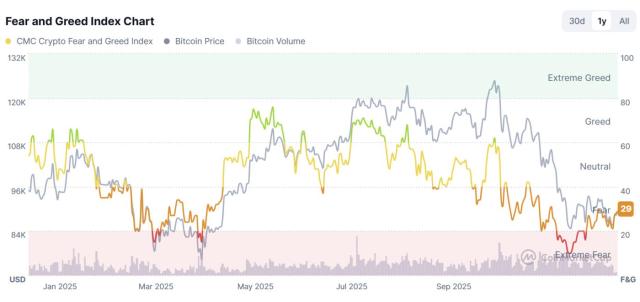Author: NingNing
Once you enter the MEME coin world, it's like the deep sea, and after 48 hours of on-chain PVP, your consciousness gradually becomes blurred, as if you have suddenly fallen from the phenomenal world that follows the logic of cause and effect into the realm of the subconscious dominated by uncertainty, and your rationality has been repeatedly crushed by the market, making you feel weak, helpless and bewildered, and the whole person is not doing well.
According to Dune panel data, 2zBoK currently launches ~25,000 MEME coins per day, and can successfully list ~400 on DEX per day, with a success rate of ~1.63%. And based on my brief experience, only a small proportion of the ~400 MEME coins that are successfully launched can break through the $1M market cap threshold. And even if they manage to break through the $1M market cap, the normal life cycle of most MEME coins is only 48 hours.
From the above data, we can see that the position of MEME coin trading on the spectrum from gambling to investment is closer to gambling. But unlike the previous generation of on-chain gambling with dice, slot machines, Crash, and 1000x contracts, MEME coins are more addictive due to the uncertainty of the rewards (the odds are constantly changing).
Moreover, the market cap and unrealized profits of MEME coins are actually a kind of modern financial illusion. The static actual extractable value of all MEME coin holders is only equal to 1/2 of the pool value.
I have analyzed the latest 24-hour hot MEME token pool - market cap data, and the distribution of the pool/market cap ratio is as follows:
Super high ratio (>100%): 5 projects
High ratio (50-100%): 12 projects
Medium ratio (20-50%): 28 projects
Low ratio (<20%): 15 projects
The mainstream pool/market cap ratio is between 30% and 60%. That is, the static actual extractable value of all holders of these popular MEME coins is only 15% to 30% of their market value.
Of course, unless there is an extreme risk event, it is generally unlikely that all holders will redeem at the same time, and holders can dynamically exit from the active market state after paying gas fees + priority fees + slippage and other comprehensive transaction costs.
In summary, the trading model of MEME coins is very different from other markets. As a Newbie who has just entered the MEME coin battlefield, instead of spending a lot of time, energy and resources to learn and train our own MEME coin trading framework, we can directly adopt the "take it and use it" method to borrow the trading framework of the on-chain PVP emperors.
According to the two criteria of high yield and high trading frequency, I have selected 8 on-chain emperor addresses from the 7-day yield ranking list of the gmgn platform. Then I fed their trading data to an AI Agent I created to analyze the trading pattern of each address. The analysis results are as follows:
Trading Pattern of Address 2zBoK
1. Trading Time Characteristics
Active period: Trading around the clock
High-frequency trading characteristics: One transaction every 3-5 minutes
Pace of position building: Rapid batch position building
Liquidation characteristics: Stepped liquidation
2. Operational Characteristics
Entry Strategy:
Priority to grab new coins on their first listing
Focus on high liquidity tokens
Capture market panic bottoms
Track the trend of hot tokens
Exit Strategy:
30% profit for quick breakeven
50% profit for halving positions
100% profit for clearing floating shares
Reserve 10% for deep retracement replenishment
3. Capital Management Model
Position control: Main position: 20-30% of total capital
Speculative position: 5-10% of total capital
Replenishment capital: 15-20% reserve
Emergency liquidity: >30%
Trading Pattern of Address 52dq6
1. Trading Frequency Characteristics
High-frequency trader: Average 39.3 transactions per day
Trading time distribution: Trading around the clock
Maximum consecutive trades in a single project: 11 (CHAOS)
Trading interval: Average 15-20 minutes/transaction
2. Target Selection Strategy
Focus on tokens: CHAOS (multiple large transactions)
vvaifu (consecutive trades)
BIOCHAD (high profit target)
GRIMES (high volatility target)
Trading characteristics: Tend to focus on high market cap Tokens
Focus on high liquidity targets
Track hot token trends
Prioritize well-known projects
3. Capital Management Strategy
Position control: Standard position: $300-500
Key project: $1000-3000
Exploratory position: $100-200
Chasing position: $500-1000
Stop loss strategy: Rapid stop loss: -15%
Normal stop loss: -30%
Maximum stop loss: -50%
Trading Pattern of Address 4Ye7c
1. Trading Characteristics
Trading rhythm: Concentrated trading period: 8am-10pm
Maximum consecutive trades in a single token: 8
Average trading interval: 15-25 minutes
Stable trading frequency, not affected by market fluctuations
Target selection: Focus on: altGz, degenai, SPOOKYKAT, etc.
Seek opportunities mainly in medium market cap tokens
Tend to focus on targets with better liquidity
Avoid extremely low market cap tokens
2. Capital Management Strategy
Entry Characteristics
Initial position size: $500-1000
Condition for adding positions: Add positions after a 10% price increase
Add positions when volume expands
Add positions when breaking key levels
Pace of position building: Complete position building in 3-5 steps
Each additional position not exceeding 50% of the initial position
Total position control within 30%
Exit Characteristics
Profit taking: Start reducing positions at 30% profit
50% profit, reduce positions by half
100% profit, clear floating shares
Stop loss setting: Single transaction stop loss: -15%
Total position stop loss: -25%
Forced liquidation when floating loss exceeds 30%
Trading Pattern of Address BieeZ
1. Trading Characteristics Analysis
Target Selection Characteristics:
Focus on tokens: TAY (multiple large transactions)
TOKIDOKI (high liquidity target)
ruby (target for batch position building)
VITARDIO (high volatility target)
Trading Frequency Characteristics
Extremely high-frequency trader
Average one transaction every 6-15 minutes
Maximum consecutive trades in a single target: 5-8
Trading around the clock, no obvious time preference
2. Strategy Analysis
Entry Strategy
Initial position size: $800-1200
Timing: Breakout or retracement consolidation
Method: Rapid batch
Verification: Volume confirmation
Add-on strategy Profit add-on: 10% profit level
Retracement add-on: 5-8% retracement level
Breakout add-on: Key resistance level
Maximum add-on times: 3-4
Exit Strategy
Profit taking first profit taking: 30-50%
Batch reduction: Every 20% increase
Final profit taking: 150-200%
Retain position: 10-20%
Stop loss setting Single transaction stop loss: -8%
Total position stop loss: -15%
Floating stop loss: Drawdown exceeds 30%
Time stop loss: 15 minutes without profit
Trading mode of address 2vfEa
1. Trading characteristics
Characteristics of target selection
Core focus tokens: DREAM (main trading target)
WOFAI (secondary trading target)
WIFE (auxiliary trading target)
ANTDOG (strategy verification target)
Characteristics of trading strategy
High concentration strategy highly concentrated on DREAM token
Deep participation in a single target
Long-term tracking and holding
Batch building and reducing positions
Position management: Single transaction size: $500-2500
Maximum holding ratio: 60%
Add position ratio: 30-50%
Reduce position ratio: 20-30%
2. Operation mode analysis
Entry characteristics
Initial position building: Moderate scale ($500-1000)
Batch position building (3-5 transactions)
Focus on price structure
Attach importance to trading volume
Add position strategy: Add position after breakout confirmation
Add position on pullback stabilization
Add position with volume support
Add position on trend continuation
Exit characteristics
Profit-taking strategy: Segmented profit-taking
Retain core positions
Trailing stop-loss
Swing trading
Trading mode of address 57hdD
1. Trading characteristics
Characteristics of target selection
Extremely concentrated on ZENO token
Deep participation in a single target
Track the core target throughout
Avoid diversified investment
Characteristics of trading rules
Initial position size: $200-500
Add position rhythm: Add once every 20% increase
Add position ratio: 30-50%
Maximum single transaction: Around $2,000
Holding period: 4-5 days
Trading time: Concentrated in Asian time
Operation frequency: Observe every 1-2 hours
Decision speed: Fast and accurate
2. Strategy analysis
Entry strategy:
Price characteristics break through previous highs
Significant increase in trading volume
Pullback stabilization
Concentrated positions
Position building: Small position trial
Add position after confirmation
Batch position building
Dynamic adjustment
Exit strategy: Set segmented profit-taking
Rolling hold
Retain seed position
Dynamic adjustment
Stop loss design: Single transaction stop loss: -10%
Total position stop loss: -20%
Floating profit stop loss: -30%
Time stop loss: No increase for 2 days
Trading mode of address DVLTL
1. Trading characteristics analysis
Characteristics of target selection
Trading tokens: WSOL (large transactions)
CLNKER (high-frequency operations)
USDC (liquidity management)
EVE (swing trading)
Characteristics of operation mode
Large single transaction management: $3,000-8,000
Exploratory operation: $80-300
Average holding: $500-1,500
Liquidity reserve: >30%
Holding period: 1-3 days
Trading interval: 4-6 hours
Observation period: Continuous monitoring
Decision time: Fast
2. Strategy analysis
Entry characteristics
Fundamental selection of project fundamentals
Liquidity analysis
Capital direction
Market sentiment
Technical analysis of trend confirmation
Volume and price coordination
Support and resistance
Market structure
Capital management strategy
Position control: Main position: 30-40%
Swing position: 10-20%
Exploratory position: 5-10%
Reserved capital: >30%
Risk control: Single transaction stop loss: 15%
Total position stop loss: 25%
Floating profit protection: 30%
Composite risk: 40%
Trading mode of address 7sKVa
1. Trading characteristics
Operation style
High-frequency small-amount frequent trading
Small-amount position building
Rapid closing of positions
Dynamic adjustment
Multi-token rotation
MOSHI (main force)
Maxwell series
JUKEBOX
Roblox
Characteristics of trading strategy
Time management: Trading around the clock
Average one transaction every 13 minutes
Concentrated trading time
Flexible adjustment
Capital management: Single transaction limit: $200-400
Total position: <30%
Reserved capital: >50%
Dynamic balance
2. Strategy analysis
Entry characteristics
Technical selection: Hourly level breakout
Volume and price coordination
Support and resistance
Trend confirmation
Position building: Exploratory position building
Batch add position
Dynamic adjustment
Timely stop loss
Exit strategy
Profit-taking: Set gradient profit-taking
Wave completion
Trend tracking
Dynamic adjustment
Stop loss control: Single transaction stop loss: 10%
Intraday stop loss: 20%
Total position stop loss: 30%
Time stop loss: 2 hours
We can see that these MEME coin chain kings exhibit a wide variety of trading modes, each with its own unique advantages:
-- High-frequency trading type (4Ye7c, 7sKVa):
Advantage: Capture more short-term opportunities
Challenge: Requires extremely strong execution and system support
-- Value investment type (DVLTL, 57hdD):
Advantage: Risks are more controllable, less pressure
Challenge: Requires strong patience and research capabilities
-- Balanced type (BieeZ, 9X2hv):
Advantage: Better risk-return ratio
Challenge: Requires a balance of multiple capabilities
The above is an analysis of the trading modes of MEME chain kings, but due to the limited sample size and short time frame, we cannot yet determine whether their success is due to their being favored by fate or their trading modes.
Finally, some additional data: the correlation between pool size and market capitalization is 0.83, and the average daily trading volume / pool ratio is 0.73.
The characteristics of high-value MEME coins are three: reasonable pool ratio (30-60%), stable trading activity, and healthy token distribution (Top10 holders at 10%-15%).







